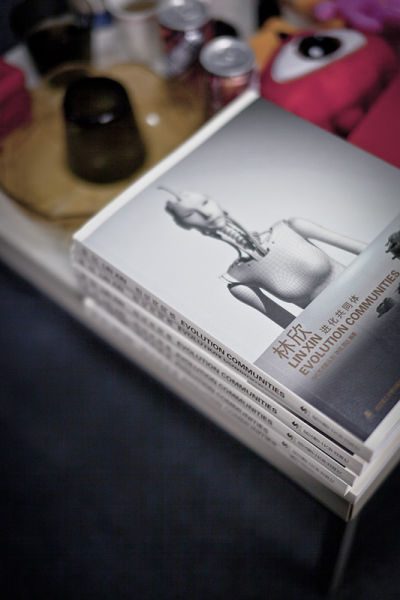Extracted from the original article ‘Reading Lin Xin’ by Zheng Naiming
In his The World is Flat Thomas L. Friedman quoted an African ballad and proverb. ” Every morning in Africa, a gazelle wakes up. It knows it has to run much faster than the fastest lion or it will be killed. Every morning a lion wakes up. It knows it must run faster than the slowest gazelle or it will starve to death. It does not matter you are a lion or a gazelle. When the sun comes up, you’d better start running.”
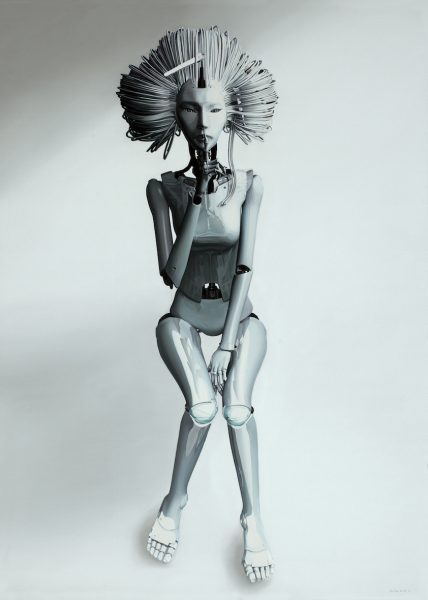
This African ballad and proverb followed a prelude. As a prophet of trend, Friedman mentioned the Chinese entry into WTO on Dec. 11, 2011 meant that Beijing agreed to observe the rules on export, import, foreign capital, etc., as most countries in the world did. He said, “I don’t know who is the lion and who is the gazelle, but I do know this: Ever since the Chinese joined the WTO, both they and the rest of the world have had to run faster and faster. This is because China’s joining the WTO gave a huge boost to another form of collaboration- offshoring.” Offshoring means a company moves its factory into China, where it produces the very same product in the very same way, only with cheaper labor, lower taxes, subsidized energy, and lower health-care costs. After Deng Xiaoping took China onto the capitalist road in 1977, the traditionally closed China, under the motto of “making fortune is honorable” , opened its door to the world economy, promising industries in the industrial nations enormous opportunity.
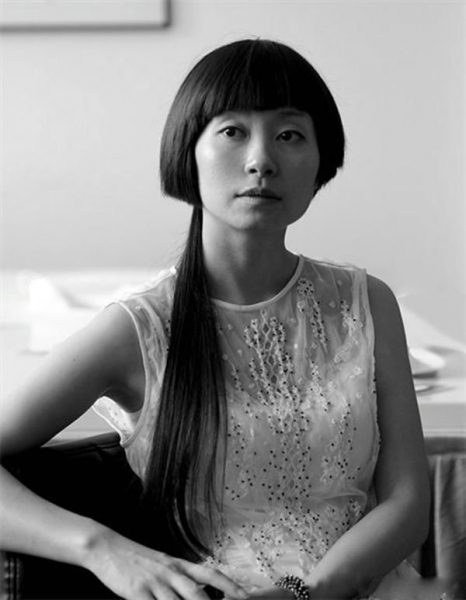
While accelerating the social progress, competition in economy has made Chinese people more alienated from culture. As is mentioned in the African ballad, when thegazelle wakes up it has noting on its mind more than running fast or it will be killed, whereas when the lion wakes up, it must run fast as well or he will not get any food. To have an empty stomach is its own business. To China, a country striving to keep up with the world, what Friedman said in 2001 still works, but the Chinese society in reality has changed dramatically, the stress from competition, above all. Who is the lion and who is the gazelle? It is not a question as the context has long forced people to run at top speed the moment they wake up. Therefore, interpersonal relation has become mechanized and more and more institutionalized.

Like the “humanoid” in Lin Xin’s works, people do not vary much in their appearance. However, she seems to make her prediction in the undifferentiated appearance, recollecting her childhood. Progress is probably the rhythm people set themselves, but some changes turn out to be off the rail. It is true that her paintings on canvas is not concerned with economy, but the technological boom thanks to the economic development is in line with her topic on our age, therefore becoming the unavoidable background in her works. Such background, as Lin Xin’s contemporaries also feel, is different from both the background in the previous age and that of the age to come. Therefore, the booming Chinese economy does provide rich material for the artists in the new age.
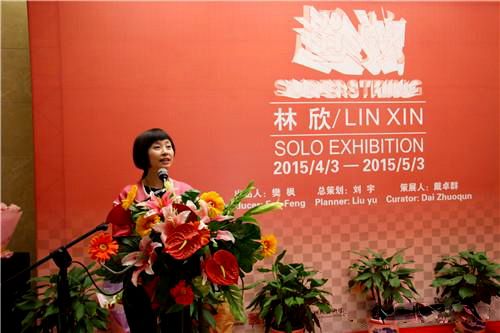
Lin Xin’s art always strikes me with dignified solitude.
She did not know why she was so interested in mechanics, once she told me. After she grew up, she attributed it to her childhood. Her father was a locksmith, mother an electrician. When she reached the age to go to the kindergarten, she was so reluctant that she kept crying, so they agreed to take her to the workshop where she spent her happiest childhood. “It was in that time”, she said, ” that I learned to make my own ‘weapon’ and toys. I have to admit that the experience there greatly influenced me in my art practice. These themes came quite naturally. No wonder people think I like machines.” There are two key points in this introduction to her childhood. One is that she belongs to the first the only-child generation, and the other is that she enjoyed entertaining herself alone in the workshop. The two factors became typical psychological elements in her art practice. It can be attributed to the universality after the People’s Republic of China was founded. Therefore, when we look at art works by Lin Xin and her contemporaries, we will fail to reach the depth and the so-called contextual Chinese element if we remain on the surface and do not explore.
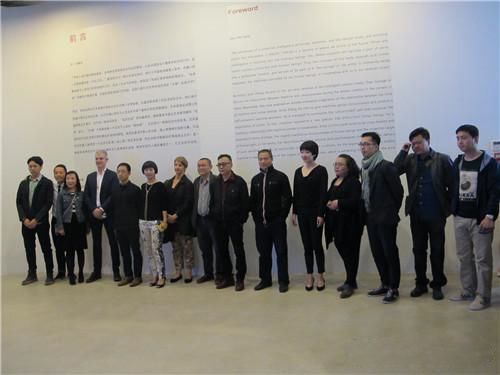

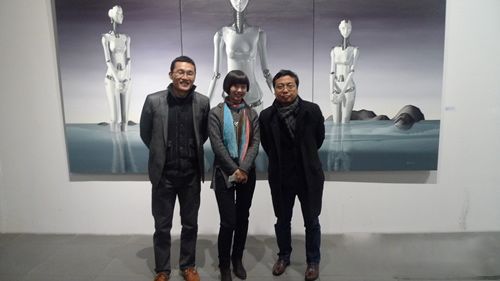
As an artist, Lin Xin stands along among her peers in the new generation.
Born in the late ’70s, she faces a sea of information brought by popular culture and the popularity of information technology, which separates the visual aesthetics and implications of this age from the previous generation. It gives rise to self expression. The stream of consciousness in self expression, however, interacts a lot with the artist’s feeling toward the age and the context. A lot of artists in this generation are so indulged in the visual image, but few care to find the balance between the information form the visual image and the social mentality.
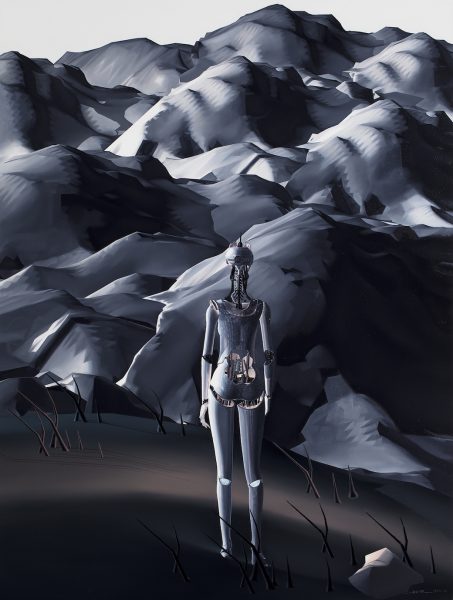

As far as the habit of reading is concerned, most people focus on the virtual visual context in her paintings. As to me, I wish to avoid such an intuitive context of “the virtual” and to put her “cold and grey” paintings in the framework of the portrait from a postmodernist perspective. I did not choose “the virtual” because I think this focus will cost the psychological discourse implied in the works, and moreover, we will indiscreetly put her paintings in the new aesthetics based on cartoon and information technology. It would not give due recognition to such a young and creative artist in the new age.
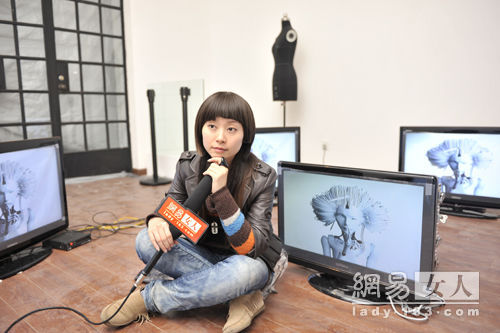
Lin Xin’s works remind me of Steven Allan Spielberg’s film Artifical Intelligence. The cowboy told David that he envied human beings for the soul, and they can interpret life in millions of ways, through art, poetry and mathematical formula, and man is the key to the meaning of life. His remarks revealed, in a sad way, the robot’s helplessness toward his own condition. By coincidence, Lin Xin once said something to the same effect, “They are, as a matter of fact, the human products, like our children. After some time, we will get tired of them because we think that they affect our life. We’ll abandon them when there is new technology. Then we reject them on the ground that they are not environmental friendly. As human products, they develop as society goes, but we often oppose them. We never stop to think for a while, what kind of attitude and feeling we should have toward them as our direct products.”
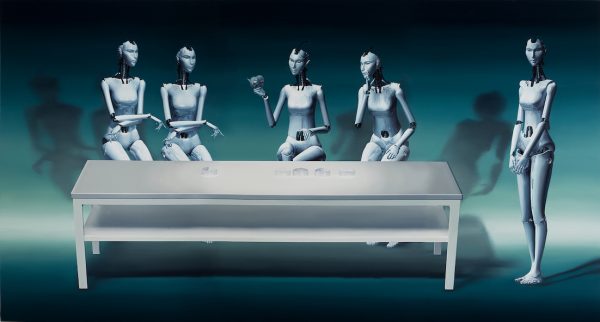
Whether it is the robot in robots in Artifical Intelligence or the humanoid in Lin Xin’s works, the problem here is that man has become so intelligent as to be able to design and “produce” a kind of “semi-living form”. No matter how elaborate and complex these forms are, human beings will never get satisfied and will continue to making new programs to update them because they can never replace human being, and neither can they have genuine affection (David in Artificial Intelligence never stopped helping robots to get true love and the right to get it). However, human beings are secretly afraid what if the robots have these “capacities”. Economy and technology develops, so does human being’s mentality, but they are greedy and afraid to lose the right to survive.
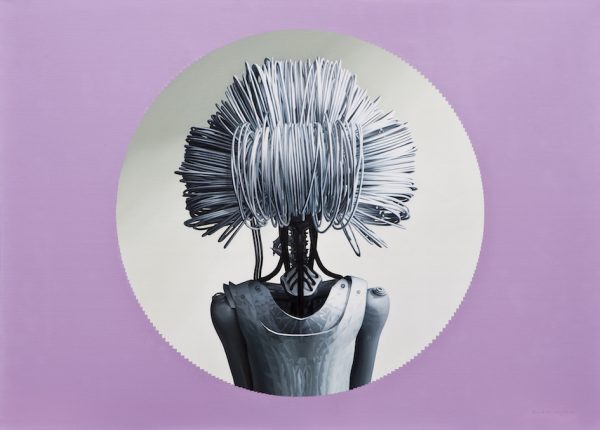
That is why I would like to categorize Lin Xin’s works into postmodernism. Her paintings developed from our life reality, after all, so she knows how to form her own art style from the function of social realism derived from our life. When talking about the form and brush strokes, I do not want to talk about her works in such a term as “virtual”, as I believe it will mislead the audience into a framework where there is nothing except the artist’s whispers. My understanding of her art practice told me that she seems to be more convinced of such statements as “the reality is no longer a reliable basis or the original”, “the virtual might be the most real”, and “what is virtual is probably the most authentic and most manageable…” Her remarks prove that she expects to plant her social reflections on the life reality into her works.

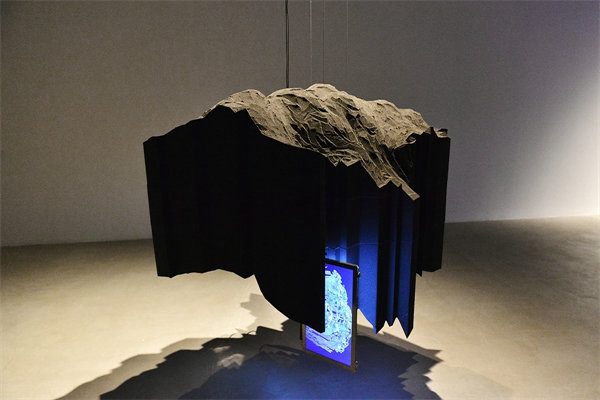
Her art also shows her understanding of industry. She likes machines, so it is quite natural for her to choose them as her theme. Here come two rules. One is related to her time, that is, the economy is dominated by computer technology in the post-industrial period, and the other is that she is familiar with the mass reproduction due to computer economy. When others look at the “humanoids” that look the same, they miss the point that they look identical because the computer technology has been selling the formatted program. When the primary background in the industrial economy is made clear, let me come to “the humanoid” from the essentials from social and cultural perspectives. When Yue Minjun put up the silly and uniform smiling face and Zeng Fanzhi showed the emotionless masks, they invariably aimed to highlight that in China where economy was given the top priority, the most genuine human nature is drained away, and what is on the face is nothing but normalized products.
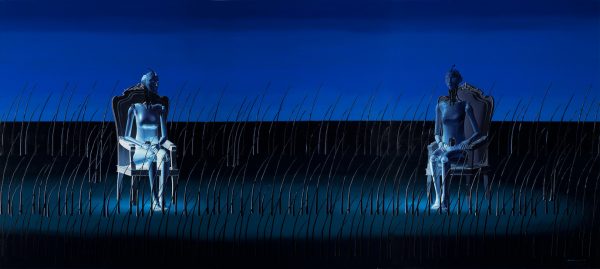
Lin Xin does not point out this social reality in a quite visible way or in an acid tone. Rather, she turns to the grey and cold metal that is typical of computer technology. The robots are well-trimmed in the painting, like you and me in the real world. The normalized lines are so precise that we understand immediately these “humanoid” are nothing but “semi-living” forms without psychic muscle. Her unique treatment also inherits the previous artists’ description and understanding of the Chinese context. Their difference lies in the fact that Zeng Fanzhi and his contemporaries highlighted the topic of Chinese elements while Lin Xin focuses on the psychological elements she can identify in her age.
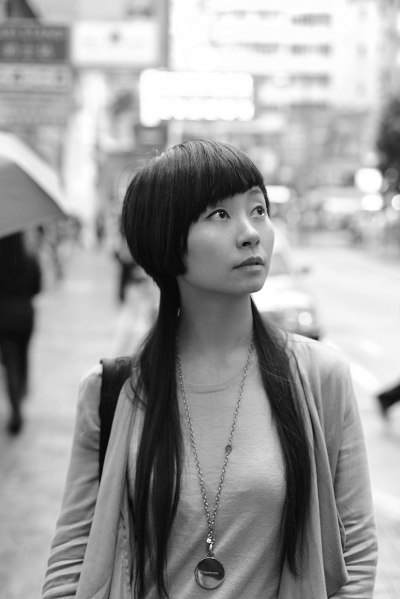
Artists in different periods have different statements to make, bring forth their perplexities about the age, and find a way out. I am particularly impressed by her way of posing questions and looking for a solution. It is not because of the “humanoid” texture due to the grey and cold metal but of the strong emotion about another reality in the extremely repressive but unavoidable situation.
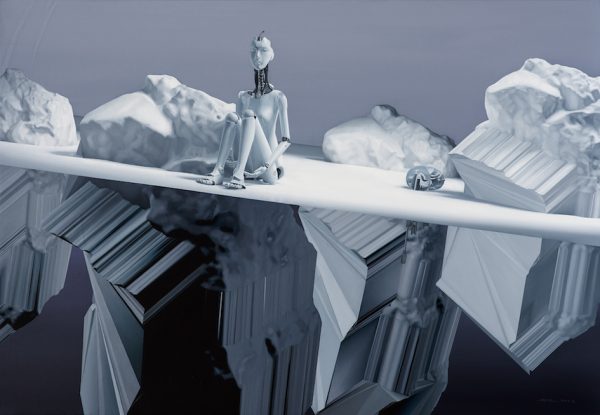
She once said something quite touching, “…there is breeze that does not tease, sunshine that does not give warmth, but our longings are still clearly reflected…” A human being has no way to chose life or death as they do not have the super power to choose the era. We might never know, however, the “humanoid” we build also have the “unbearable lightness “.
